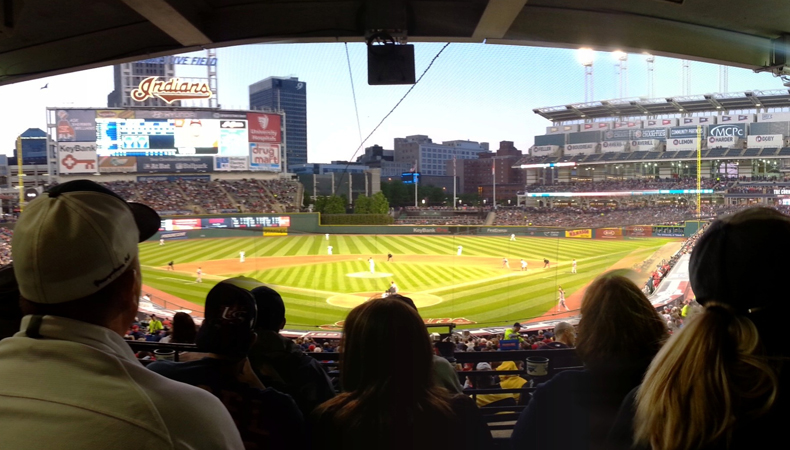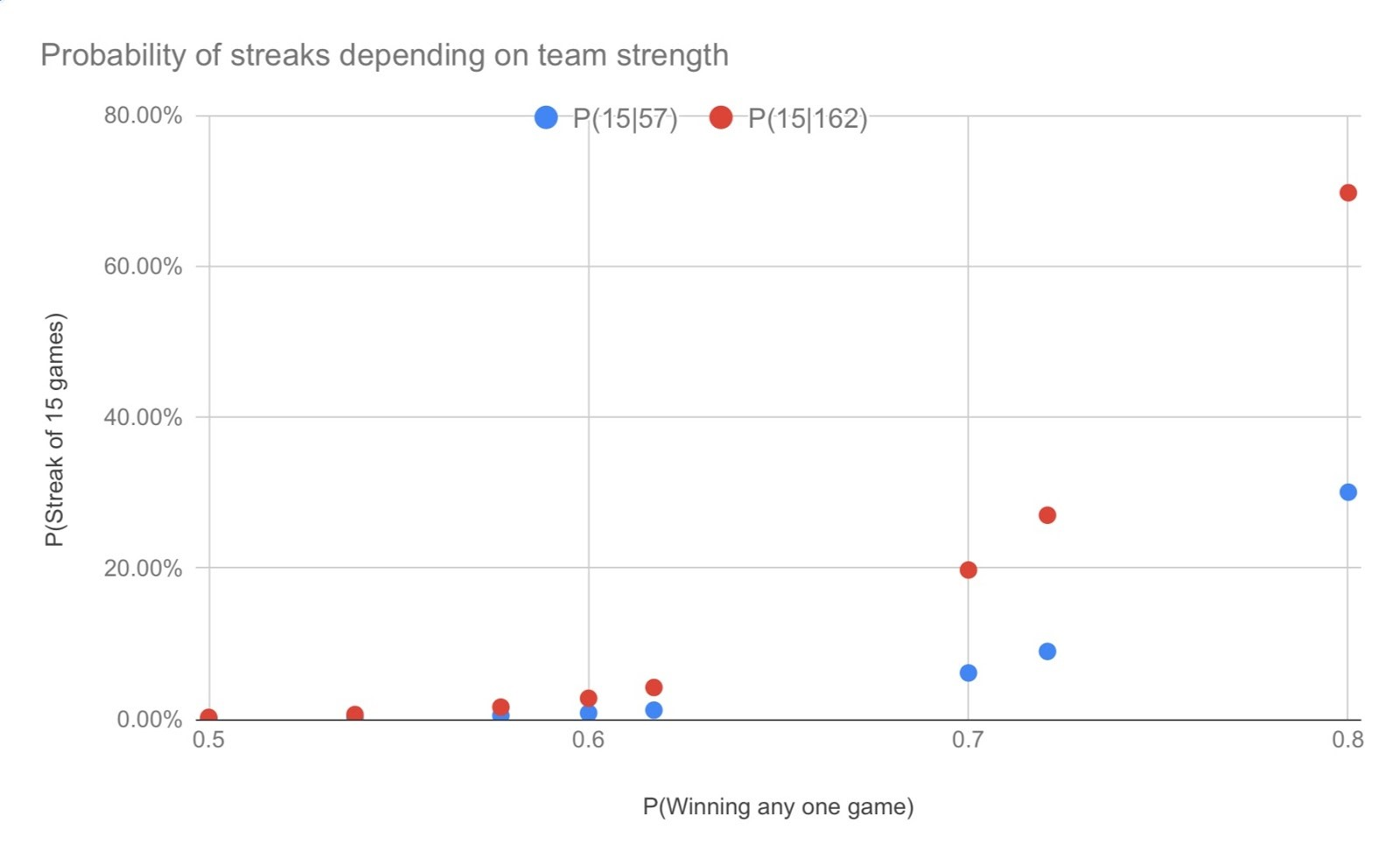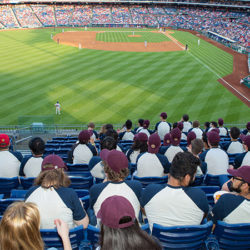
ESPN recently ran an article about an Ohio-based window company that guaranteed any of its customers who installed windows (the kind that makes walls transparent, not the PC operating system), siding, or doors in the month of July would have their money returned if the Cleveland Indians had a 15-game win streak from August 1st until the end of the season. From Universal Windows Direct’s perspective, this seemed like a pretty decent bet; the longest streak the Indians had the season before was 14 games, and no team had had a 15-game win streak since the Oakland A’s in 2002 (when they won 20 straight). At the time that Universal Windows Direct started their promotion, the longest streak the Indians had put together in the 2017 season was 6 in a row. This seems like a fun promotion that would not put the company on the hook very often, but it did come with considerable risk ($1.7 million worth of risk, to be exact).
Understandably, the company did not want to risk losing that much money for an event out of their control, so they insured the risk; for $75,000, they were assured that in the unlikely event of an Indians win streak, they would not lose their July revenue. The question is, was this a fair amount to pay for the risk? If they are in the same position next year, and have the same opportunity to run this promotion and hedge their risk with insurance, should they?
Based on our analysis, it seems that even though the insurance company ended up paying out $1.625 million net, this was a good transaction for them, and one they should enter again in the future under similar circumstances. For the sake of this analysis, we will ignore home field advantage (in MLB, the home team wins 54% of the time and the visitors win 46%; for the Indians in 2017, their performance has been better on the road). Adding a differential for home vs. away games would make the payout even greater for the insurance company, as we will discuss below.
We could do a game-by-game analysis of the remaining portion of the Indians schedule from August 1 to the end of the year, with projected starting pitchers, guesses at injuries, etc. For the sake of this analysis, though, we are going to assume that the Indians will have a win rate in all games played, and no correlation between games (so knowing that they won the night before does not change our guess at their probability of winning tonight).
There are a few probabilities of note in order to figure out what the probability would be of winning (at least) 15 games in a row in the 57 games that the Indians had remaining from August 1 until the end of their season. The critical probabilities are (1) the projected probability of them winning any given game at the beginning of the season, (2) their realized win rate through the end of June, which would have been all of the information that Universal Windows Direct would have had about how their season was going, (3) their win rate in the month of July, while the promotion was running, which may have been known by the insurance company at the time that they took on the risk (though this is not disclosed in the article), and (4) the best win rate in Major League Baseball since WWII, which happened to come from the 1954 Cleveland Indians. These respective numbers are (1) 61.72% (they were projected to go 100 – 62), (2) 53.85% (42 – 36), (3) 57.69% (17 – 11), and (4) 72.08% (111 – 43). So what would be the probability of a 15-game win streak in 57 games with each of these probabilities? Just for the sake of completeness, we have also included the probability of a 15-game win streak for a full 162-game season, and the corresponding probabilities for other projected win rates.

Here’s what we can learn from this chart and graph: Unless your team is very strong, it is highly unlikely that you can win 15 games in a row in a 57-game stretch. Much more importantly, we can think of the insurance contract in terms of its expectancy. We will be as generous as possible to the Indians, and say that, in spite of winning just under 58% of their games through the end of July, they would still be expected to win 61.72% of their games going forward. As we can see, this would mean they would have a 1.19% chance of having a 15-game win streak in their final 57 games, so the insurance company would make $75k, 98.81% of the time, and lose $1.625 million the other 1.19% of the time. In the long run, and with enough diversified similar risks, the insurance company is expected to come out ahead $54,770. This is the excess premium that Universal Windows Direct paid to insure their risk. The implied (fair) probability would have to have been 4.4%. This would be the case if the Indians won about 68% of their subsequent games.

As we mentioned earlier, this assumes a constant probability of winning any game. If the 68% came from having a 75% chance against half the teams they faced and a 61% chance against the other half, their probability of winning 15 games in 57 games would drop considerably (especially if the games were interspersed with each other), and would be much closer to the 1.19% outcome seen in (1) in the chart. This type of variance could be expected not just from the home/away game differential, but from the relative strength of the remaining opponents.
It is reasonable to think that Universal Windows Direct struck a bargain in insuring their risk since they do not lose $1.7 million after the Indians 15+ game win streak.((Their streak ended with a 4-3 loss to the Kansas City Royals after winning 22 games in a row.)) After all, their total expense ended up only being $75k. Even if they saw this analysis, they may have still made the decision to insure their risk, since a sure loss of $75k is acceptable, while a possible loss of $1.7 million is not. (This is the benefit of financial markets that allow risk transfer!) From the perspective of the insurance company, though, it seems that they charged more than enough to cover their own risk, and that nobody should have expected the Indians to get so hot as August turned into September. Maybe the Indians were lifted by the multitude of fans rooting for them so they could get back their investment on windows!
As a side note, the odds offered by the insurance company, implying a 4.4% chance of paying off, are almost exactly the odds of getting a run of 10 or more heads in 100 flips of a coin. (The probability of a streak of 10 or more heads OR TAILS would be nearly twice that, or 8.7%.)




Subscribe Now
Get each new post sent straight to your inbox